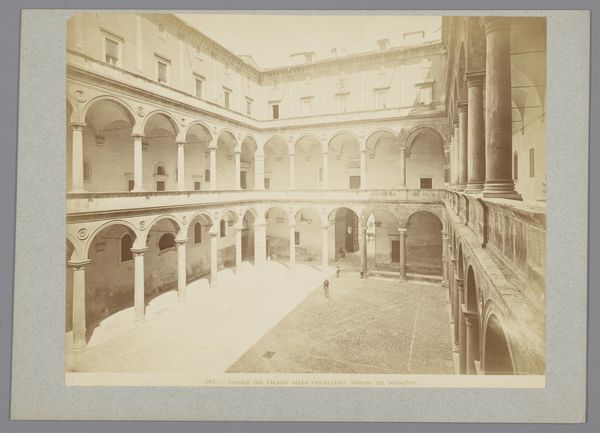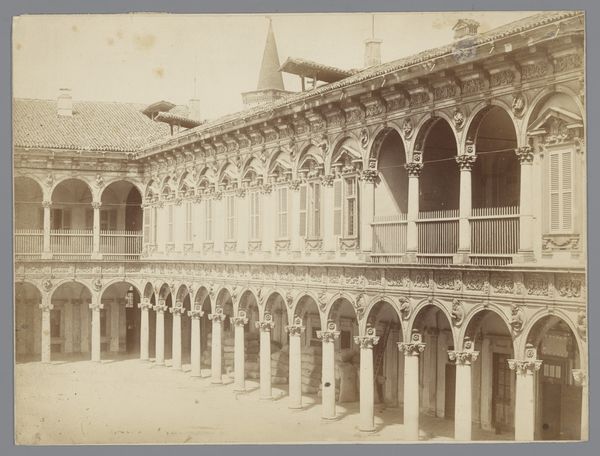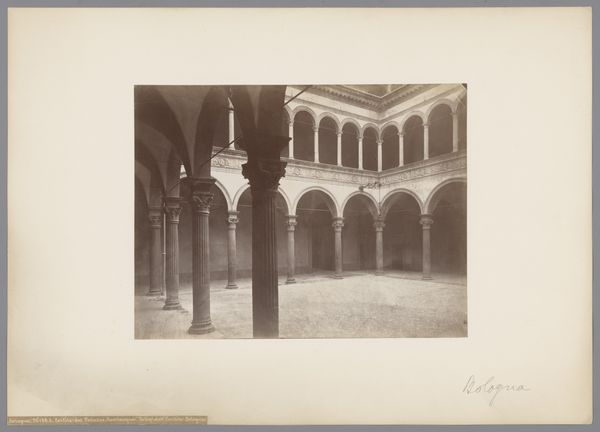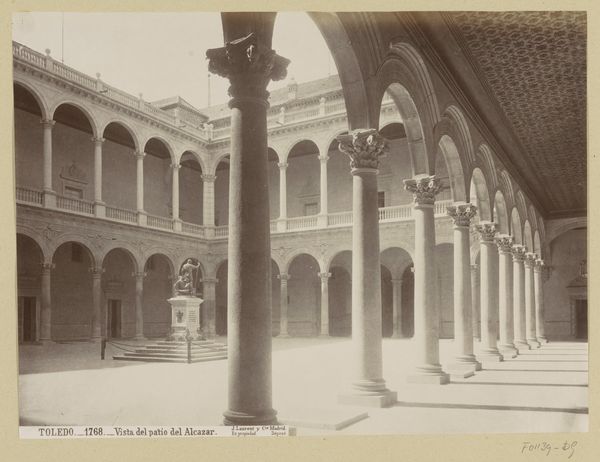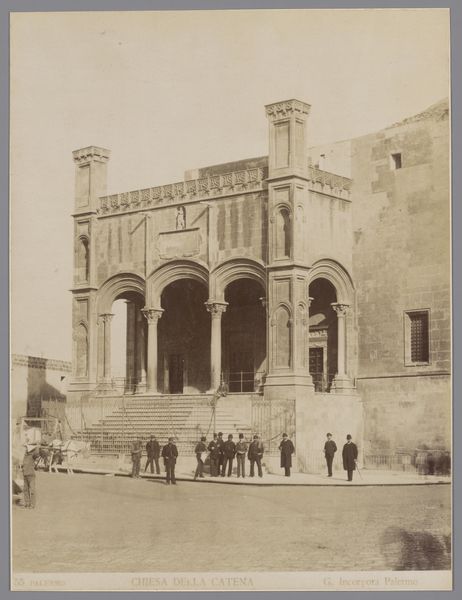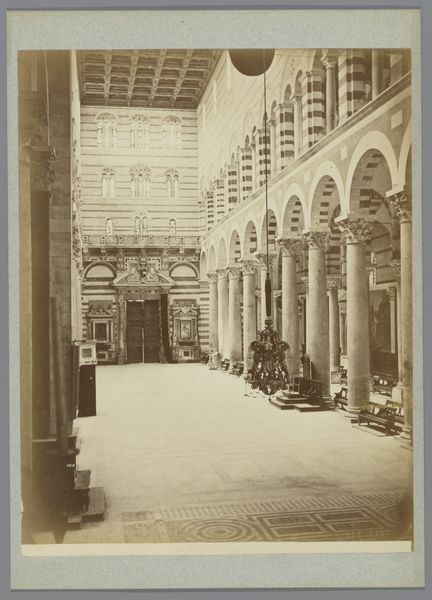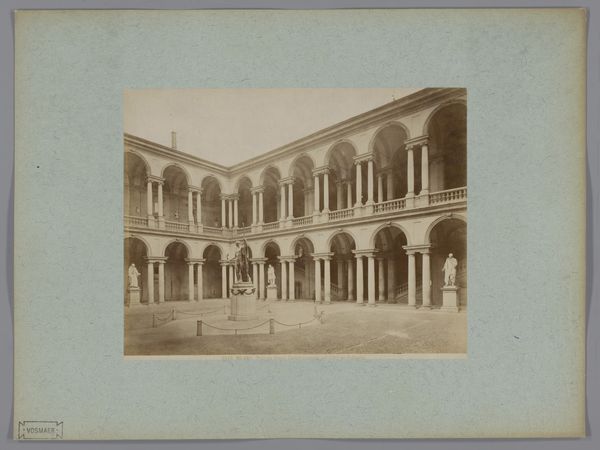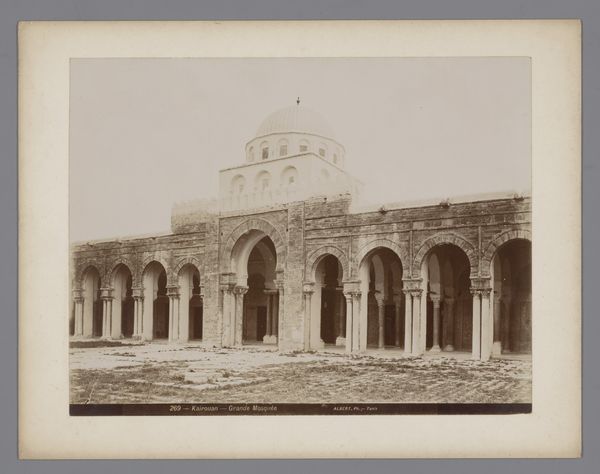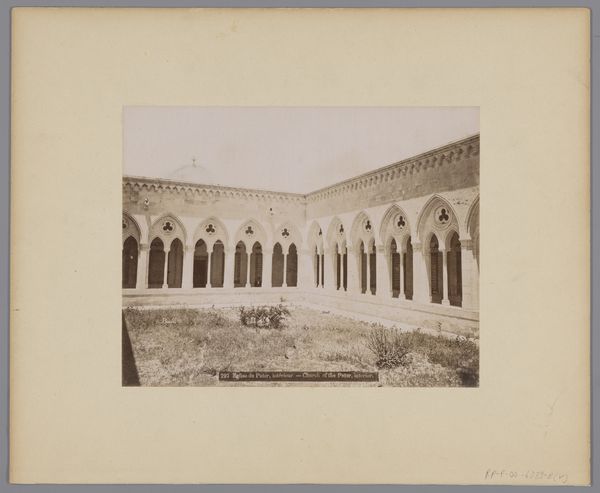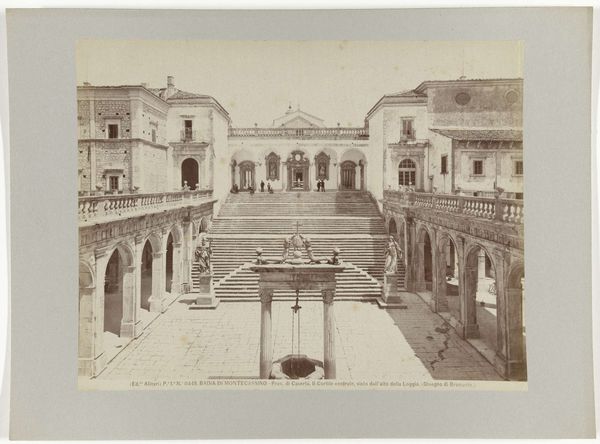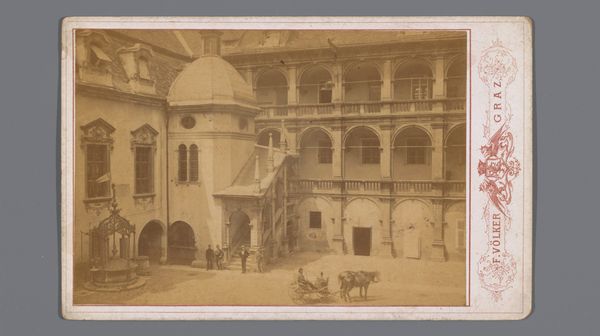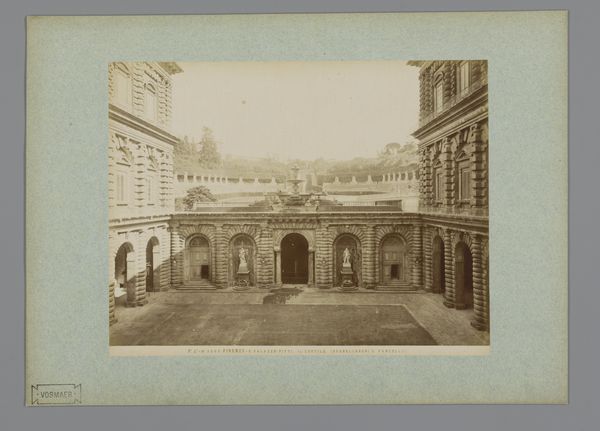
photography, gelatin-silver-print, architecture
#
photography
#
gelatin-silver-print
#
cityscape
#
italian-renaissance
#
architecture
#
realism
Dimensions: height 199 mm, width 257 mm, height 214 mm, width 265 mm
Copyright: Rijks Museum: Open Domain
Editor: Here we have an undated gelatin-silver print, sometime between 1865 and 1900, titled "Binnenplaats van het Palazzo Beltrami en Ferrara," attributed to Fotografia dell'Emilia. It captures the inner courtyard of a palace in Italy. The architecture feels imposing, but something about the photograph gives off a slightly melancholic atmosphere. What do you see in this piece? Curator: I see a photograph that's very self-aware of its own historicity. This "Realist" photograph isn't just documenting architecture; it’s documenting how people wanted to *see* the Italian Renaissance in the late 19th century. Notice the placement of figures—almost as though placed there for scale but also, in a sense, staging a particular version of Italian history, or perhaps commenting on its effects and the passing of time. What do you make of their presence, or lack thereof, within such a grand space? Editor: That's interesting, I hadn't considered the staging aspect. The figures do seem almost like props themselves, adding a human element to the imposing architectural features. Are you suggesting this photograph isn’t necessarily an objective document? Curator: Exactly. Consider who would commission or purchase such a photograph. Was it meant to glorify Italian heritage, or perhaps serve as a nostalgic reminder for Italians abroad? What’s also relevant is the museumification process, in this case of the architecture being showcased, which shapes its cultural importance and interpretation. Editor: So, the photograph is also a social object then, reflective of cultural and political ideologies of its time. How have presentations of history in architectural photography changed over time? Curator: Post-modernism ushered in a new consciousness to explore subjective viewpoints in historical photography that challenged earlier notions of objective documentation. Also, consider the digital tools that alter and shape our perceptions today. Editor: Wow, I’ll certainly look at these types of photos with different eyes now, it's more complex than I first thought! Curator: Absolutely. Thinking about art and how its history is presented can give us invaluable insight into societal attitudes and values.
Comments
No comments
Be the first to comment and join the conversation on the ultimate creative platform.
